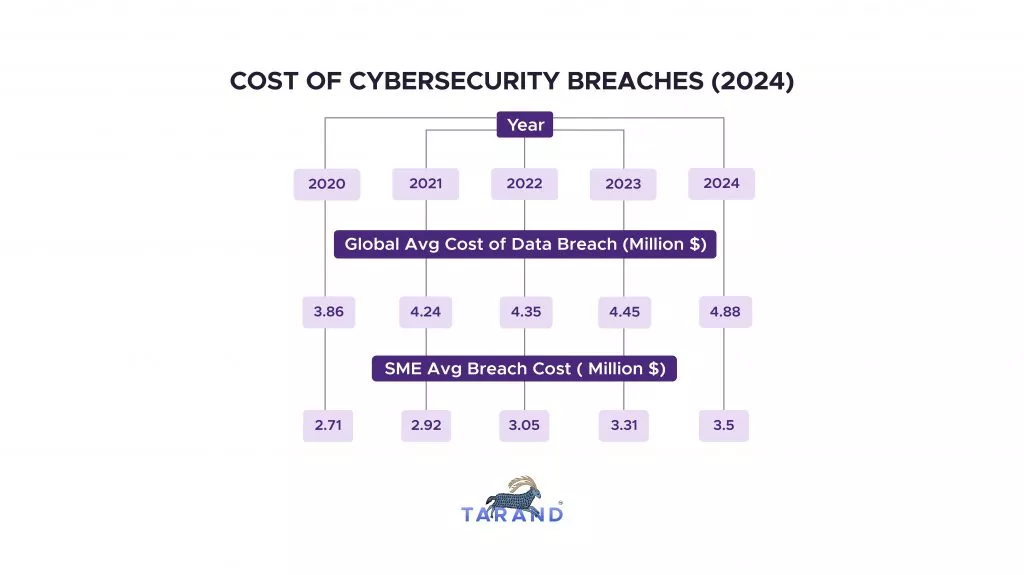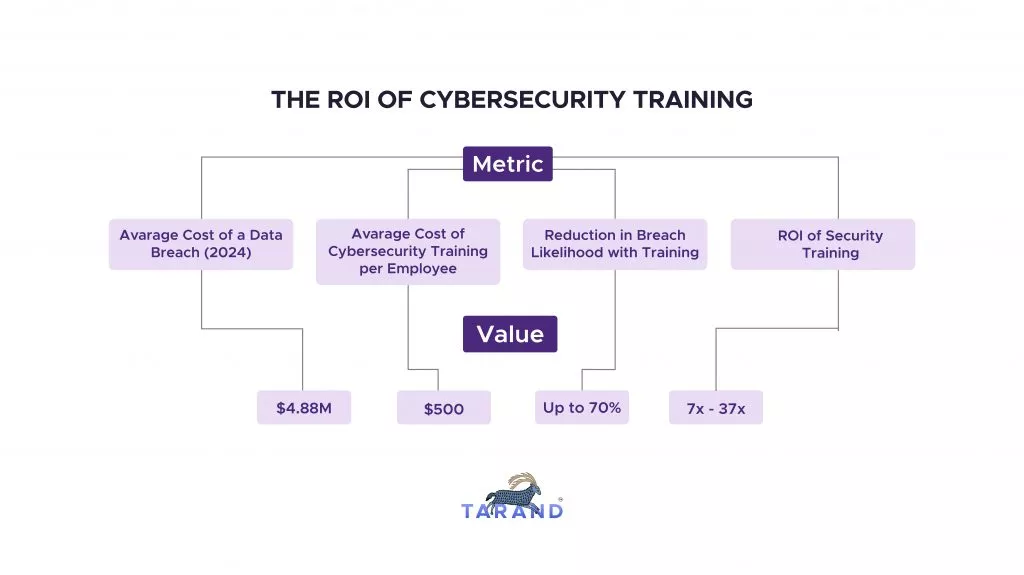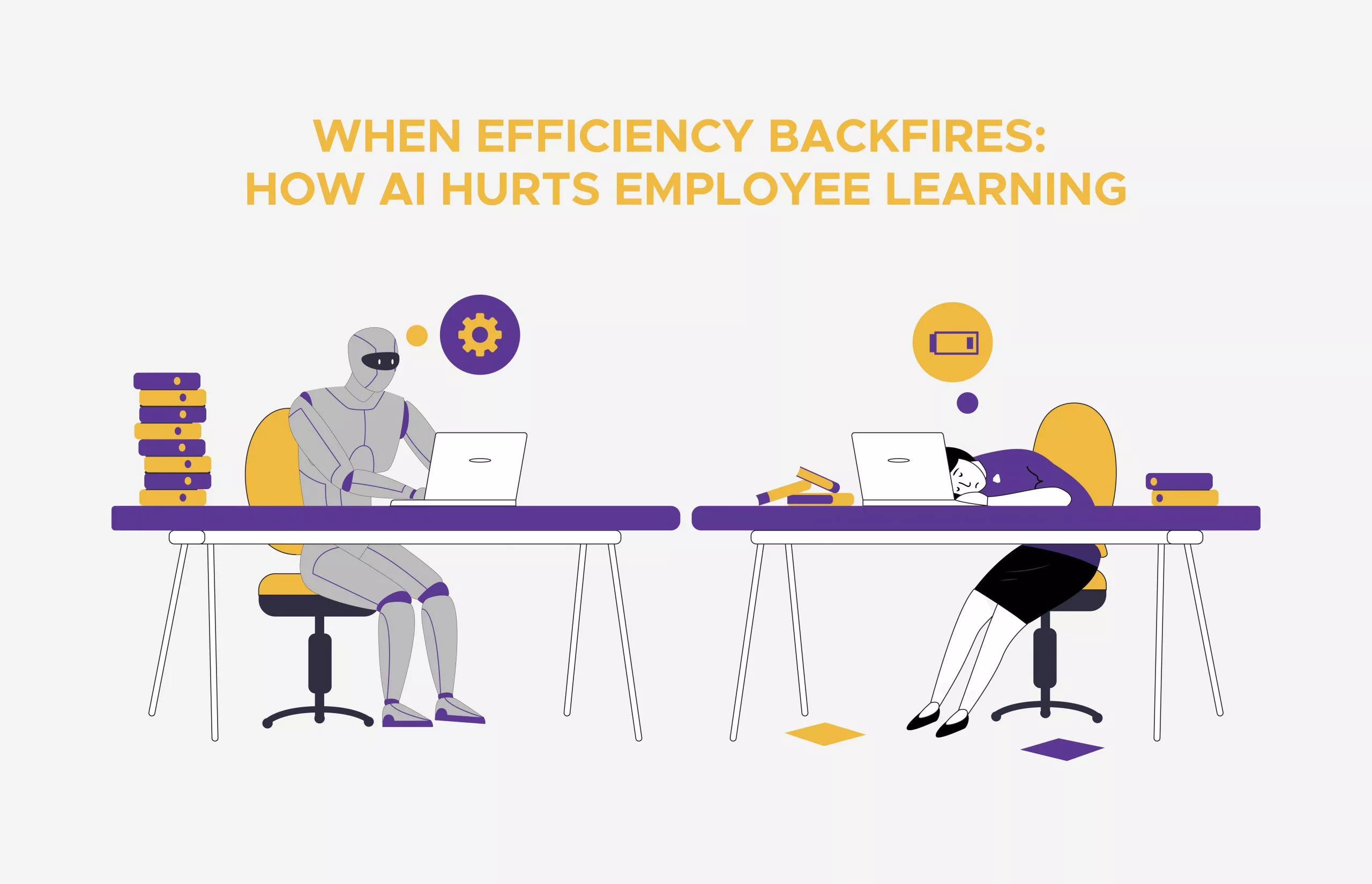The increasing sophistication of cyber threats and challenges has made cybersecurity awareness a business imperative rather than just an IT concern. Today, companies of all sizes—from Fortune 500 to small businesses—face a harsh reality. Their employees are often the weakest link in cybersecurity defenses. Breaches continue to surge despite billions of dollars spent annually on advanced security infrastructure. According to a 2024 Fortinet report, nearly 70% of organizations believe their employees lack fundamental cybersecurity awareness, a sharp increase from 56% in 2023. This lack of knowledge leads to financial loss. Cybercriminals take advantage of mistakes to get past advanced security.
A report from IBM shows a concerning number. In 2024, data breaches cost an average of $4.88 million. For small and medium-sized enterprises (SMEs), the financial impact is particularly severe. In 2023, companies with fewer than 500 employees faced an average data breach cost of $3.31 million, a significant rise from $2.98 million in 2021. The report attributes this increase primarily to expenses related to business disruption and post-breach response activities. Notably, the United States continues to lead in average breach costs, reaching $9.36 million in 2024. Most of these breaches (nearly 88%) — can be traced back to human error. Employees unknowingly clicking on phishing emails, reusing passwords, failing to recognize suspicious activity, or neglecting security updates continue to be among the leading causes of cyber incidents.

Cybercriminals don’t necessarily rely on sophisticated malware or brute-force attacks; instead, they take advantage of human psychology. Phishing remains the most common attack vector. The 2023 Internet Crime Report by the FBI’s Internet Crime Complaint Center documented over 2,825 ransomware incidents, an 18% increase from the previous year. Additionally, reported losses from these incidents surged by 74%, escalating from $34.3 million to $59.6 million. These statistics underscore the escalating impact of phishing and ransomware attacks on organizations. Even some of the world’s most technologically advanced firms have fallen prey to such attacks—Google and Facebook lost a combined $120 million in a phishing scam that lasted over two years. Another growing concern is social engineering, where attackers manipulate employees into revealing confidential information. These attacks have become increasingly sophisticated, leveraging deepfake technology and AI-generated emails that closely mimic legitimate communications. The significant rise of corporate email compromise scams has only exacerbated this issue, between June 2016 and December 2021, there were 241,206 reported incidents of BEC, resulting in an exposed loss of over $43 billion.
Despite overwhelming evidence that human error is the primary cause of breaches, many businesses still fail to adequately train their employees. Too often, companies conduct cybersecurity awareness training as a one-time event, assuming employees will retain the information indefinitely. However, cyber threats constantly evolve, and outdated training quickly becomes ineffective. A 2023 study found that even the least effective security training programs yield a seven-fold return on investment, while well-structured programs can deliver a 37-fold return. The benefits come from fewer breaches, improved compliance, and reduced downtime caused by cyber incidents. To be effective, cybersecurity training must be frequent and ongoing rather than sporadic. Organizations should conduct regular refresher courses, implement phishing simulation tests, and tailor security education to different employee roles. A finance executive faces threats different from those of an IT administrator, and training should address these specific risks.

The rise of remote and hybrid work models has further complicated cybersecurity efforts. Employees now access corporate networks from home Wi-Fi, personal devices, and shared workspaces, often without adequate security measures. A 2023 study found that 47% of remote employees had experienced a phishing attack while working from home. Data breaches involving remote employees cost an average of $137,000 more than those occurring in traditional office settings. The reasons for this higher cost vary, but lack of security protocols, failure to use VPNs, connection to unsecured public Wi-Fi networks, and failure to install security updates on personal devices are major contributing factors. Companies must counteract these risks by implementing strict remote work policies, requiring multi-factor authentication, enforcing endpoint security measures, and providing cybersecurity training tailored to remote workers.
Technology alone cannot solve cybersecurity problems—organizational culture plays a crucial role. Companies that prioritize cyber hygiene in their day-to-day operations significantly reduce their exposure to risk. A strong cybersecurity culture starts with leadership buy-in, where executives adhere to the same security protocols expected of employees. Clear, enforceable policies should be in place to ensure employees follow best practices, and organizations should shift toward a “zero-trust” approach that limits access to sensitive data based on the principle of least privilege (PoLP). Incident response preparedness is also essential—every employee should know exactly what to do in the event of a breach, including whom to notify and how to contain the damage.
With cyber threats growing in complexity, businesses can no longer afford to treat cybersecurity awareness as an afterthought. The consequences of inaction are too severe—financial losses, regulatory fines, reputational damage, and even business closure. The organizations that will thrive in this new digital reality are those that make cybersecurity awareness an integral part of their operations. Businesses can significantly mitigate their risk by investing in continuous cybersecurity training, implementing strict security policies, and fostering a security-first mindset among employees. Cybercriminals are relentless, but an organization’s most vigorous defense is a well-prepared workforce. The question is no longer whether a company will be targeted—it’s whether its employees will be ready when it happens.






